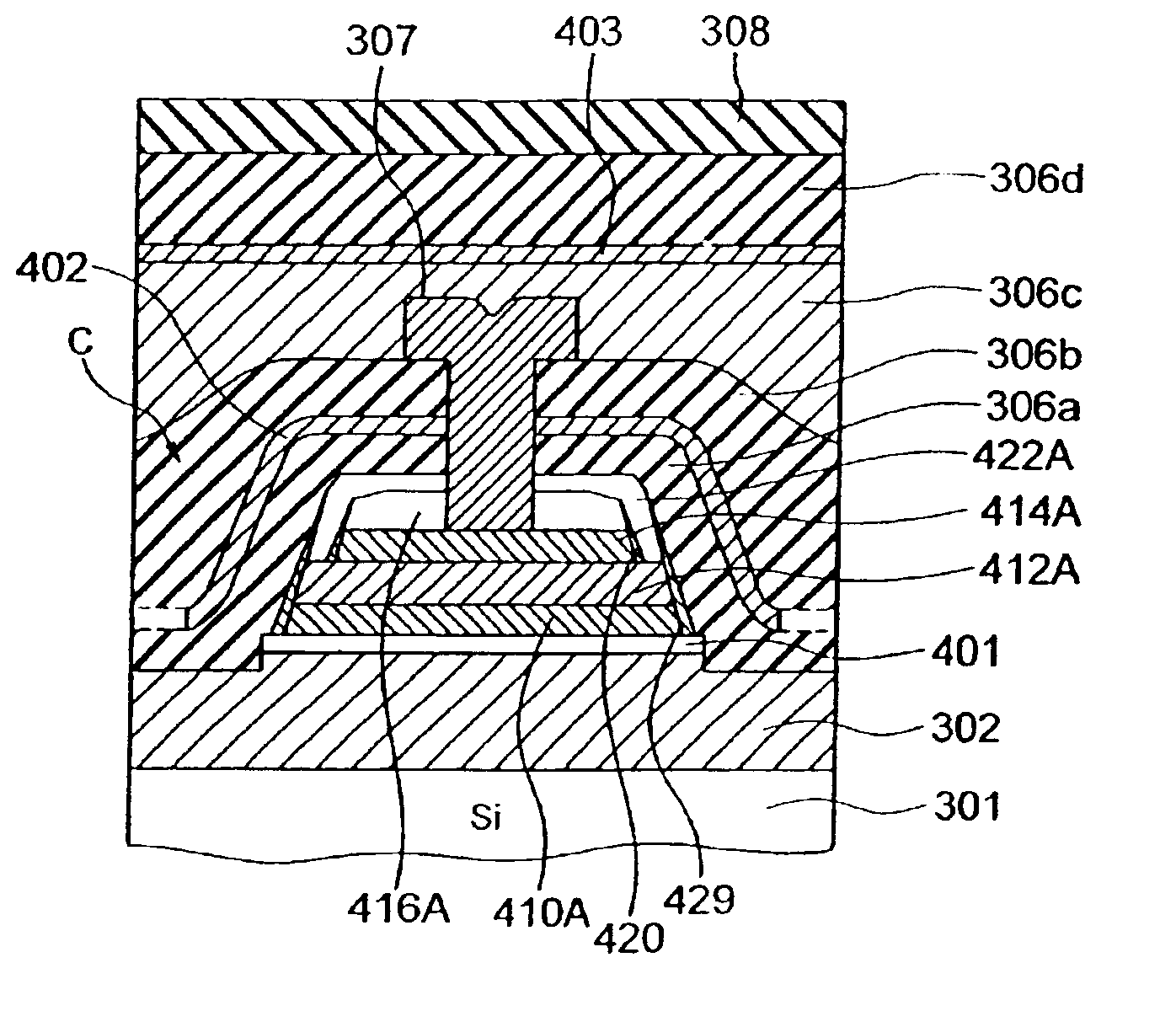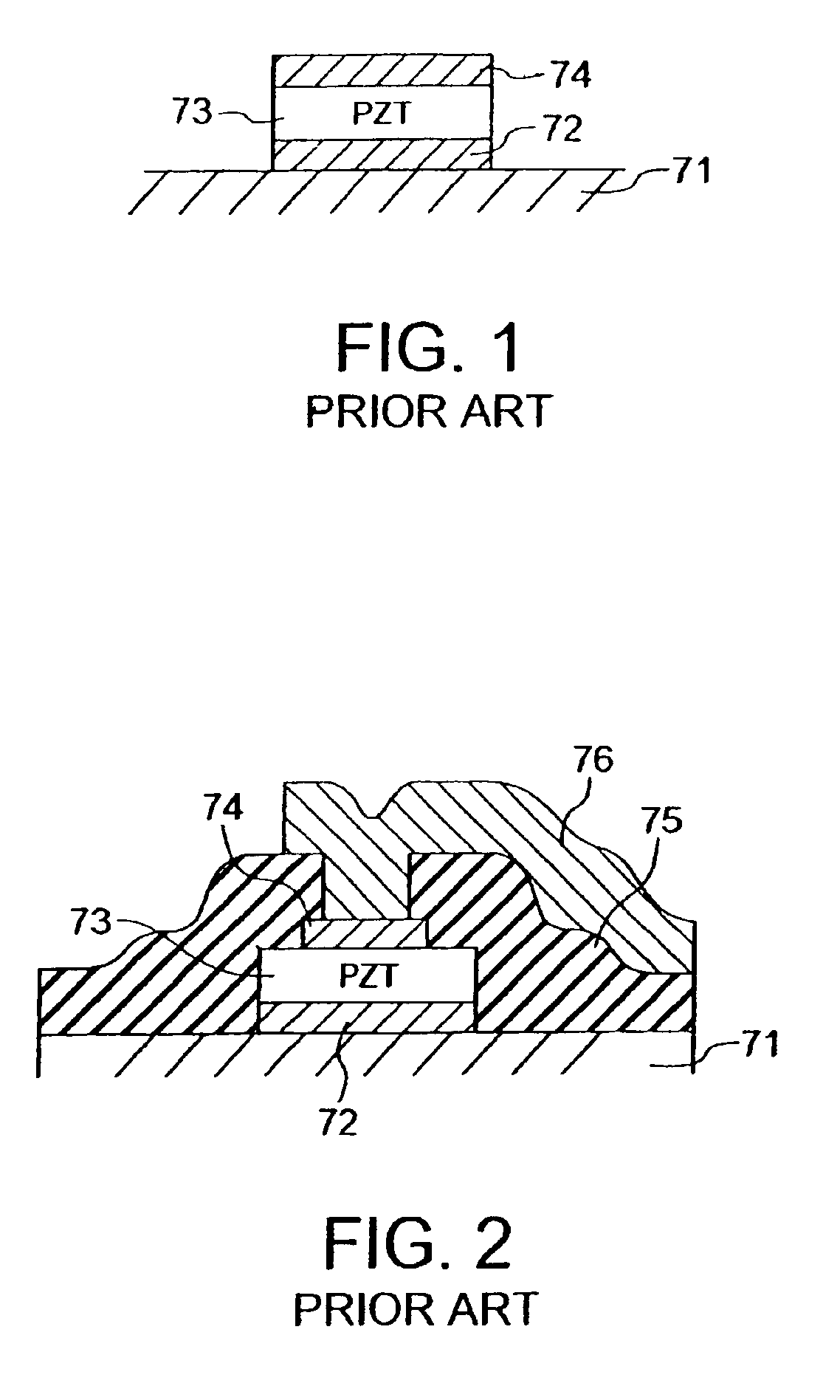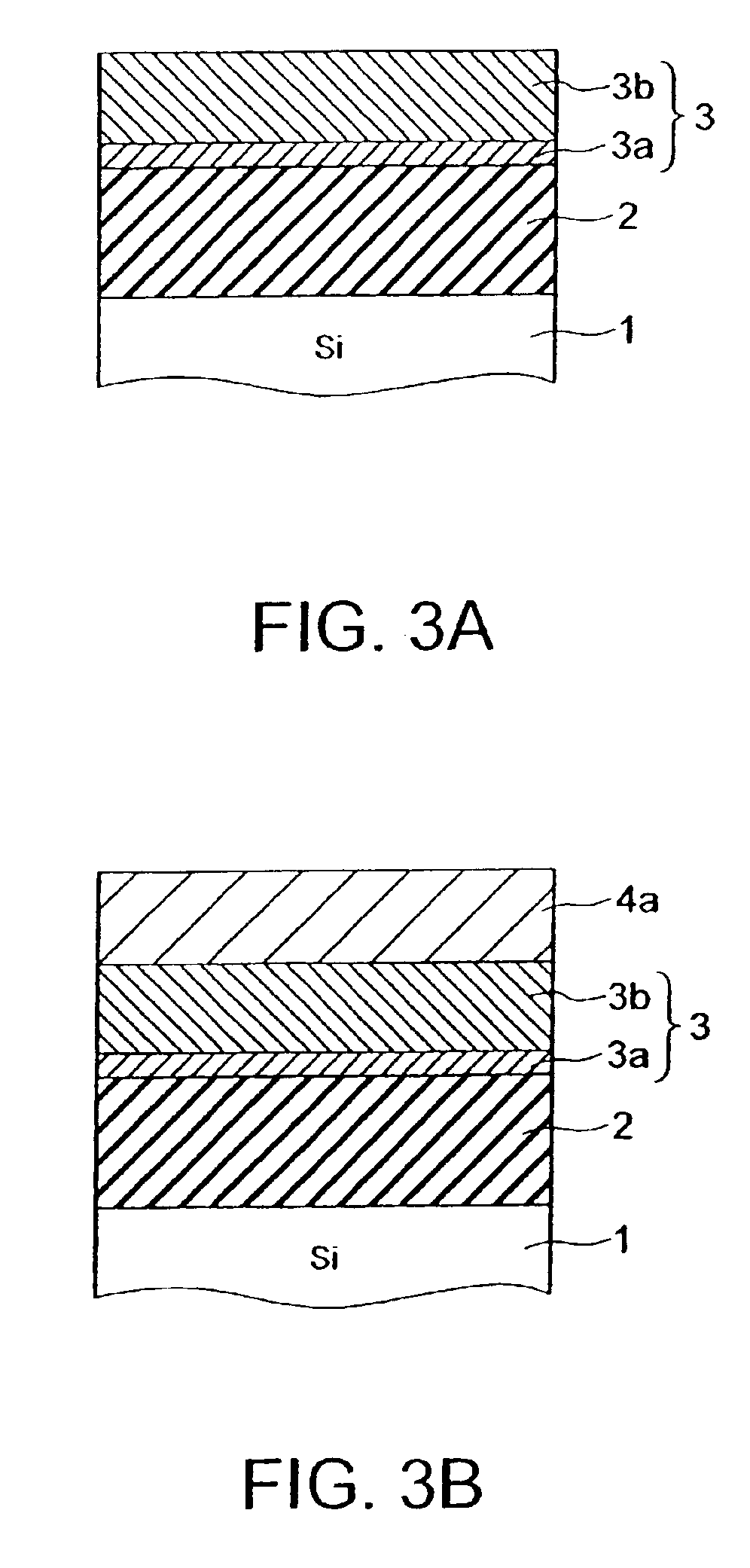Ferroelectric memory device having a hydrogen barrier film
a technology of ferroelectric capacitors and memory devices, which is applied in the direction of capacitors, solid-state devices, transistors, etc., can solve the problems of reducing the reliability and yield of the whole memory, the failure of the memory, and the inability to achieve real-time techniques, so as to reduce the degradation of remnant polarization, effectively inhibit the characteristics of the ferroelectric capacitor, and reduce the effect of degradation
- Summary
- Abstract
- Description
- Claims
- Application Information
AI Technical Summary
Benefits of technology
Problems solved by technology
Method used
Image
Examples
Embodiment Construction
[0082]Referring now to the accompanying drawings, the preferred embodiments of the present invention will be described below.
[0083]In the following description, most of the embodiments show only the capacitor part. It is to be noted that contact plugs, interconnections, MOS transistors, etc. are generally provided as shown in FIG. 15 which will be described later, but in other Figures, they are omitted.
[0084]FIGS. 3A through 3E show a process for manufacturing a first preferred embodiment of a ferroelectric capacitor on a silicon substrate. In FIG. 3A, elements, such as MOS transistors, are formed on a silicon substrate 1, and a silicon oxide (SiO2) film 2 for covering the MOS transistor is formed thereon. On the silicon oxide film 2, an adhesion film 3a having a thickness of 20 nm is deposited by a sputtering method, and subsequently, a Pt film 3b having a thickness of 20 nm is deposited by a sputtering method to form a bottom electrode 3 of a Pt / adhesion stacked film.
[0085]Subsequ...
PUM
 Login to View More
Login to View More Abstract
Description
Claims
Application Information
 Login to View More
Login to View More - R&D
- Intellectual Property
- Life Sciences
- Materials
- Tech Scout
- Unparalleled Data Quality
- Higher Quality Content
- 60% Fewer Hallucinations
Browse by: Latest US Patents, China's latest patents, Technical Efficacy Thesaurus, Application Domain, Technology Topic, Popular Technical Reports.
© 2025 PatSnap. All rights reserved.Legal|Privacy policy|Modern Slavery Act Transparency Statement|Sitemap|About US| Contact US: help@patsnap.com



